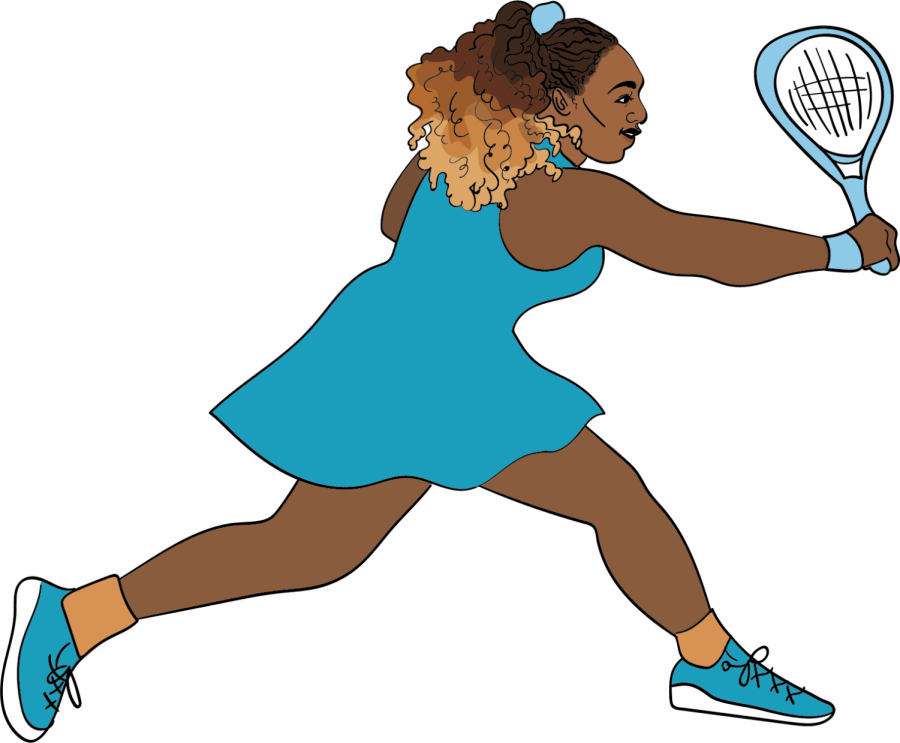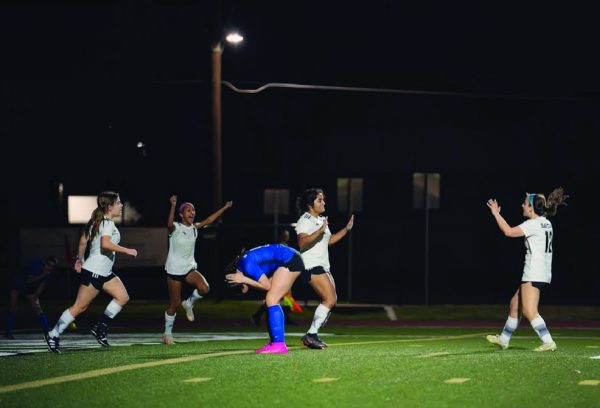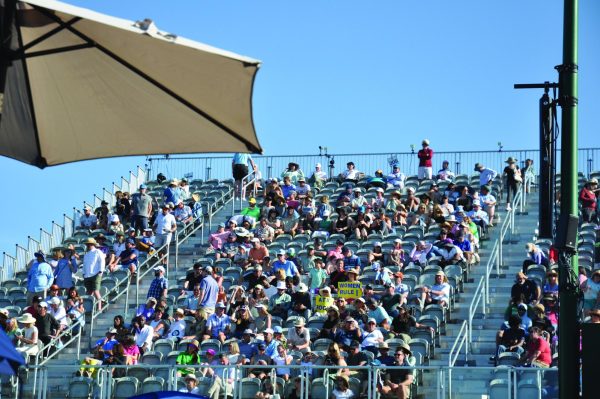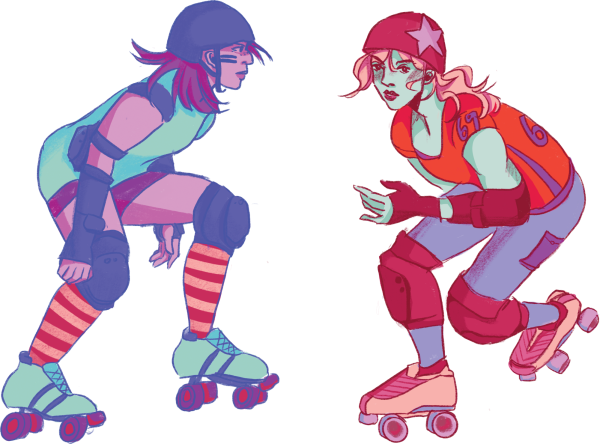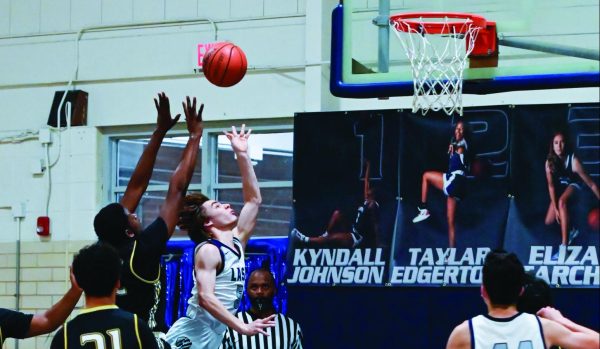Player Inequality Within the Tennis World
October 6, 2020
The U.S. Open is one of four major tennis tournaments known as Grand Slams in which all the top professionals compete. When COVID-19 struck hard and true, tennis tournaments all around the world were cancelled. The chances of the U.S. Open happening were low, but tournament organizers found a way to make it work with the appropriate safety precautions. Megan Zeng, a USTA junior tennis player and senior on the Bowie High School tennis team, noticed changes in the behavior of players, referees, and ball boys as a result of these precautions.
“I saw all the refs and line judges wearing masks, and I also saw the players having to go to their towels instead of the ball boys giving them towels,” Zeng said.
Other precautions included players and coaches staying six feet apart, frequent temperature tests, wearing masks when not on the court and keeping a live audience off the stands. These safety measures made the tournament possible, much to the delight of fans like Zeng.
“I was glad to see the U.S. Open still happening. It’s fun to watch as a player,” Zeng said.
Every year, a player is usually punished for bad sportsmanship—players from Serena Williams to Rafael Nadal have received penalties. This year, Novak Djokovic, the number one-ranked men’s tennis player in the world, was ejected from the tournament after hitting a lineswoman in the throat with a ball. Zeng asserted that a player with Djokovic’s level of experience should not make such a mistake.
“I was surprised,” Zeng said. “I feel like, at his level, he should know the rules. He should know better than to hit a ball to the back fence when he knows that there are line judges back there.”
Hitting the line judge wasn’t the first time Djokovic acted aggressively in the game. Earlier on, he slammed a ball off to the side of the court in anger. The second time he did this, someone got hurt. After several minutes of arguing with the tournament officials, Djokovic was defaulted and ejected from the tournament. According to Anders Eriksson, former number one tennis player at the University of Texas and owner of the POLO tennis and fitness club in Austin, Texas, it was unlucky that Djokovic was punished for this accident.
“It is what it is,” Eriksson said. “But it was very unfortunate because he didn’t do it intentionally.”
According to LASA tennis coach Vincent Vizcaino, showing aggressiveness during a game is not uncommon. Being a coach, he’s seen players lose their tempers on the court firsthand.
“If you let your temper get the best of you, you’re going to pay for it,” Vizcaino said. “As soon as the ball hit her, it was game over.”
This incident has made people wonder whether tournament officials are making more efforts to treat all players the same, despite their ranking. For a long time, fans and players have pointed out that higher ranked players are treated better on the court.
“Lower ranked players are treated differently,” Vizcaino said. “Higher ranked players get more privileges. When they play in a tournament they get the premier courts, and the lower ranked players get the other courts.”
There are other differences as well, such as the fact that officials let the rules stretch for higher-ranked players. With Djokovic’s recent disqualification, tournament officials are starting to change double standards.
“When it comes to fairness on the court, I do believe it sways a little bit over to the favorite players,” Eriksson said. “A lot of people were complaining that Rafael Nadal spent way more than 25 seconds between serving. But now they installed a time clock, so now it’s official. But he got away with that a lot more than the average player.”
However, Djokovic was kicked out of a large tournament despite being number one in the world, which leads people to wonder if there are more efforts being made to lessen partiality between higher and lower ranking players. Vizcaino said that if the US Open’s reputation hadn’t been threatened, they would have kept him in the tournament.
“They probably would have let him continue,” Vizcaino said. “But their reputation was on the line.”
Recently, COVID-19 has struck hard for lower ranked players. Players weren’t able to compete during quarantine, and a lot of them needed the prize money. In the past couple of months, this has raised the debate of whether or not lower-ranked players should be paid more. According to Eriksson, this is another way lower ranked players, especially those ranked in the 300s-500s, are treated differently.
“I’m a big fan of and supporter of players in the 300s, 400s, 500s, who are extremely good tennis players,” Eriksson said. “So I believe that the division and distribution of prize money should be spread out to the lower ranked players a whole lot more than what is done currently. I mean, they are just playing to survive, and every match is, ‘Am I going to make it through the week if I lose this match?’”
Additionally, if we compare tennis to other sports, we see a clear contrast. According to Eriksson, the difference in pay between tennis and other sports is huge.
“The number 100 player in golf is probably making about 10 times as much as the number 100 player in tennis,” Eriksson said. “A player ranked 300 in the world in tennis may make only $50,000, if that, in a year, and they are extremely high level. Somehow the distribution needs to be spread out.”
The good news, according to Eriksson, is that there have been more efforts to help these players. Players are standing up for each other and tournaments officials are starting to implement changes.
“For challenger events, they are starting to increase the amount of prize money given out, but you have to reach the semi finals or finals to actually feel it,” Eriksson said. “If you still lose the first round you may only make a couple hundred bucks. It’s super tough.”
According to Vizcaino, it comes down to one thing: progress. Perhaps Djokovic’s disqualification is an example of how major tennis tournaments are starting to move towards equal treatment of all players.
“He’s laid down a precedent, and it’s going to be followed from here on out,” Vizcaino said.
Djokovic’s default is an example to players of both low and high ranks that bad sportsmanship should not be tolerated in any league. According to Zeng, there’s an atmosphere of respect on and off the court that needs to be maintained for good gamesmanship.
“All of this sends a message about being a good sport and behaving with good sportsmanship and gamesmanship,” Zeng said. “You should try to respect everything; your opponent, yourself, equipment, everyone else on the court, no matter your rank.”

